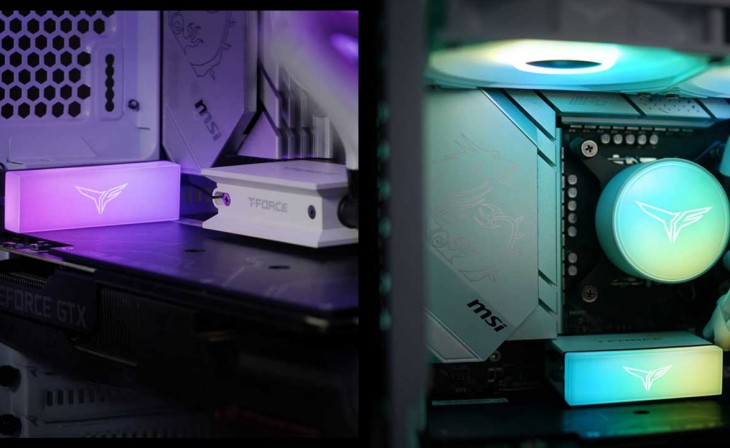TeamGroup T-Force Siren Duo 360 Review: Innovative Cooling for High-Performance Setups
The Need for Advanced SSD Cooling
With the advent of PCIe 5 SSDs, data transfer rates have soared, leading to significant heat generation. Traditional cooling methods are increasingly inadequate for these high-performance drives. We'll examine why the T-Force Siren Duo 360's liquid cooling approach is not just a luxury but a necessity for maintaining optimal performance and preventing thermal throttling or crashes under heavy loads.
Evolution of SSD Cooling
The history of SSD cooling has evolved from being an afterthought to a critical component in high-performance computing. This section will trace the journey from basic heatsinks to sophisticated solutions like the T-Force Siren Duo 360, discussing how these developments reflect changing needs in data storage and transfer technologies.
Technical Specifications of the Siren Duo 360
Detailed Specifications
A comprehensive look at the specifications of the T-Force Siren Duo 360, including its dimensions, compatibility with various sockets, materials used, pump speed, and more. This section aims to provide a clear technical understanding of the cooler's design and capabilities.
Also Check Xiaomi BE7000 Wi-Fi 7 Wireless Router
Packaging and Contents
An overview of the packaging, including the protective measures and all included components such as fans, radiator, thermal pads, and additional accessories. This part also guides through the unboxing experience and the initial impressions of the product's quality and design.
Installation and Compatibility
Step-by-Step Installation Guide
A detailed guide on installing the T-Force Siren Duo 360, from securing the radiator to the case to applying thermal paste and mounting the CPU and SSD blocks. This section is crucial for potential buyers to understand the ease or complexity of setting up the cooling system.
Compatibility Challenges
Discussion of the compatibility challenges faced during installation, particularly concerning motherboard layouts and the placement of M.2 slots. This part will include specific examples, such as issues encountered with an ASUS TUF motherboard, to illustrate potential hurdles in the installation process.
Performance and Testing
Cooling Efficiency and Benchmarks
An in-depth analysis of the cooling performance of the T-Force Siren Duo 360. This section will present data from thermal benchmarks, comparing it against other liquid and air coolers, and evaluating its effectiveness in cooling both the CPU and an M.2 SSD under various workloads.
Acoustic Performance
Evaluation of the noise levels produced by the cooler in different scenarios, from idle to heavy loads. This part aims to assess whether the low noise claim holds up under real-world conditions.
Impact of LGA1700 Socket Bending
A discussion on external factors affecting cooling performance, focusing on the LGA1700 socket bending issue and how it was mitigated in the test setup. This section emphasizes the importance of considering the entire system environment when evaluating cooler performance.
Price and Value Assessment
Cost Analysis
Examining the $399.99 price tag of the T-Force Siren Duo 360 in the context of its performance and features. This section will weigh the cooler's cost against its effectiveness in managing high temperatures in advanced SSDs and CPUs.
Market Comparison
Comparing the T-Force Siren Duo 360 with other cooling solutions in terms of price and performance. This part aims to provide a broader market perspective, helping readers understand where this product stands in terms of value for money.
Conclusion: Is the T-Force Siren Duo 360 Worth It?
A final assessment of the TeamGroup T-Force Siren Duo 360, summarizing its strengths and weaknesses. This conclusion will provide a clear verdict on whether this cooling solution is a worthwhile investment for enthusiasts and professional users, considering its performance, compatibility, and price point.




